Do you remember where you were when the Iberian Peninsula went dark? For about ten hours (longer in some areas) in April of this year, nearly 60 million people in Portugal and Spain found themselves completely without electricity. Trains stopped, telecommunications cut and emergency services impeded. Weeks later, another blackout made the news, this time at the Cannes Film Festival in France. While this instance was the result of more obvious human interaction, both events (plus rolling blackouts in La Palma) present a common theme: the increasing fragility of centralized electricity systems in the face of complexity, interconnection and (in some cases) sabotage.
If you’re thinking, “What can be done?” – fear not. At gridX, we see these blackouts not as warnings, but as a strong case to invest in smarter, scalable energy management solutions now.
Iberian blackout 2025: A timeline of trouble
Spain and Portugal grid collapse
April’s Iberian blackout 2025 was a stark reminder of the vulnerability of Europe's interconnected grid. Below is a summarized sequence of events preceding the blackout as reported by the European Network of Transmission System Operators for Electricity (ENTSO-E):
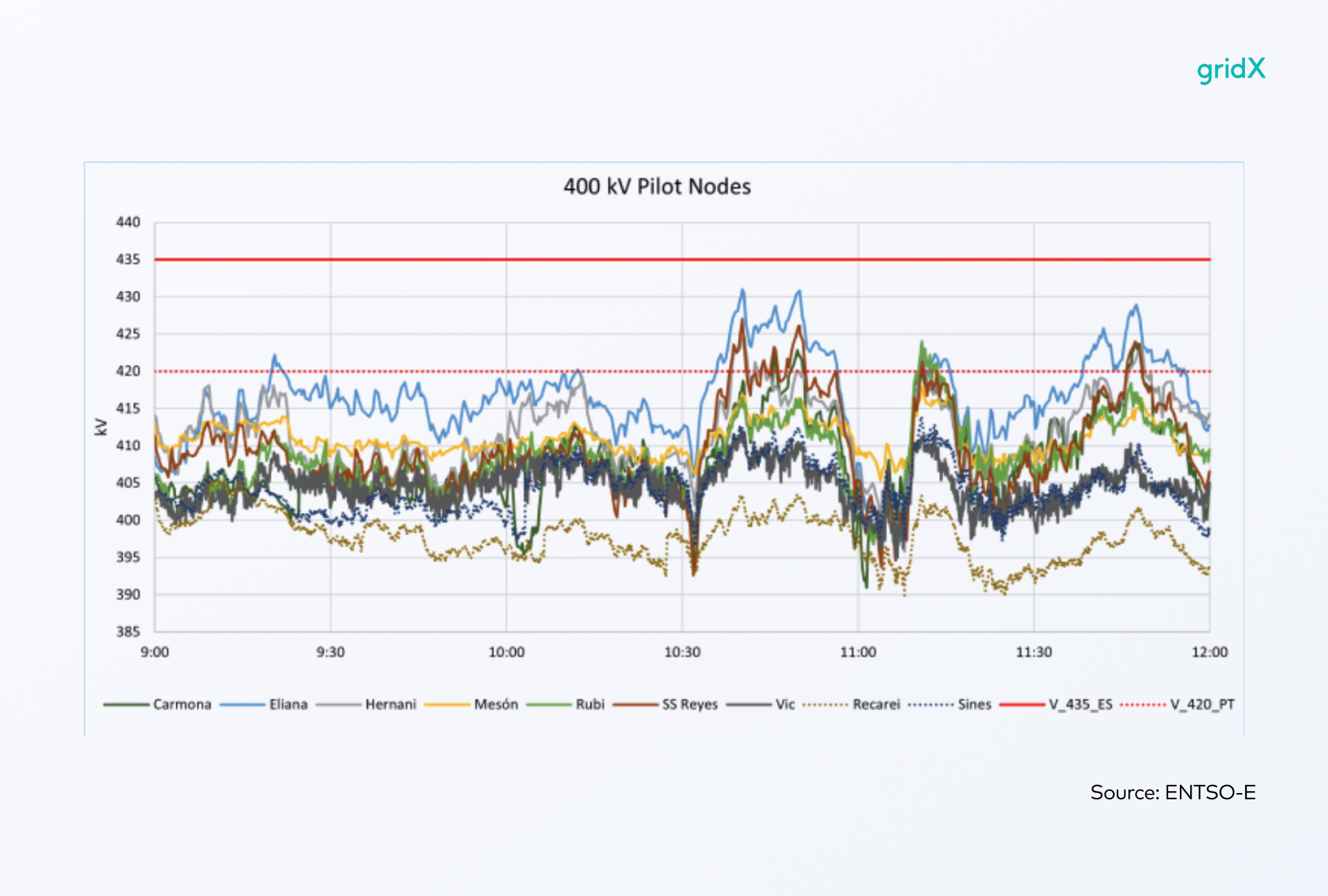
12:32:57–12:33:17 CEST
- Three major generation trips occurred in Granada, Badajoz, and Sevilla, totaling around 2200 MW of lost capacity.
- These trips caused a voltage spike in Spain, which extended into Portugal.
- At the same time, system frequency dropped.
12:33:18–12:33:21 CEST
- The voltage in southern Spain and Portugal surged further, triggering additional generation losses.
- This led to a cascade effect that deepened the frequency drop across the Iberian Peninsula.
12:33:19 CEST
- The power systems of Spain and Portugal began to lose synchronism with the rest of Europe.
12:33:19–12:33:22 CEST
- Automatic load shedding and System Defence Plans in Spain and Portugal were activated, as per EU regulations, but failed to prevent the collapse.
12:33:21 CEST
- The AC interconnectors between France and Spain were automatically disconnected due to loss of synchronism.
12:33:24 CEST
- Full system collapse in Spain and Portugal.
When the Iberian Peninsula power outage occurred, all key grid parameters crashed, and HVDC links with France ceased transmission. Within moments, tens of millions were without electricity. Islands like La Palma were also affected, some experiencing outages lasting several days.
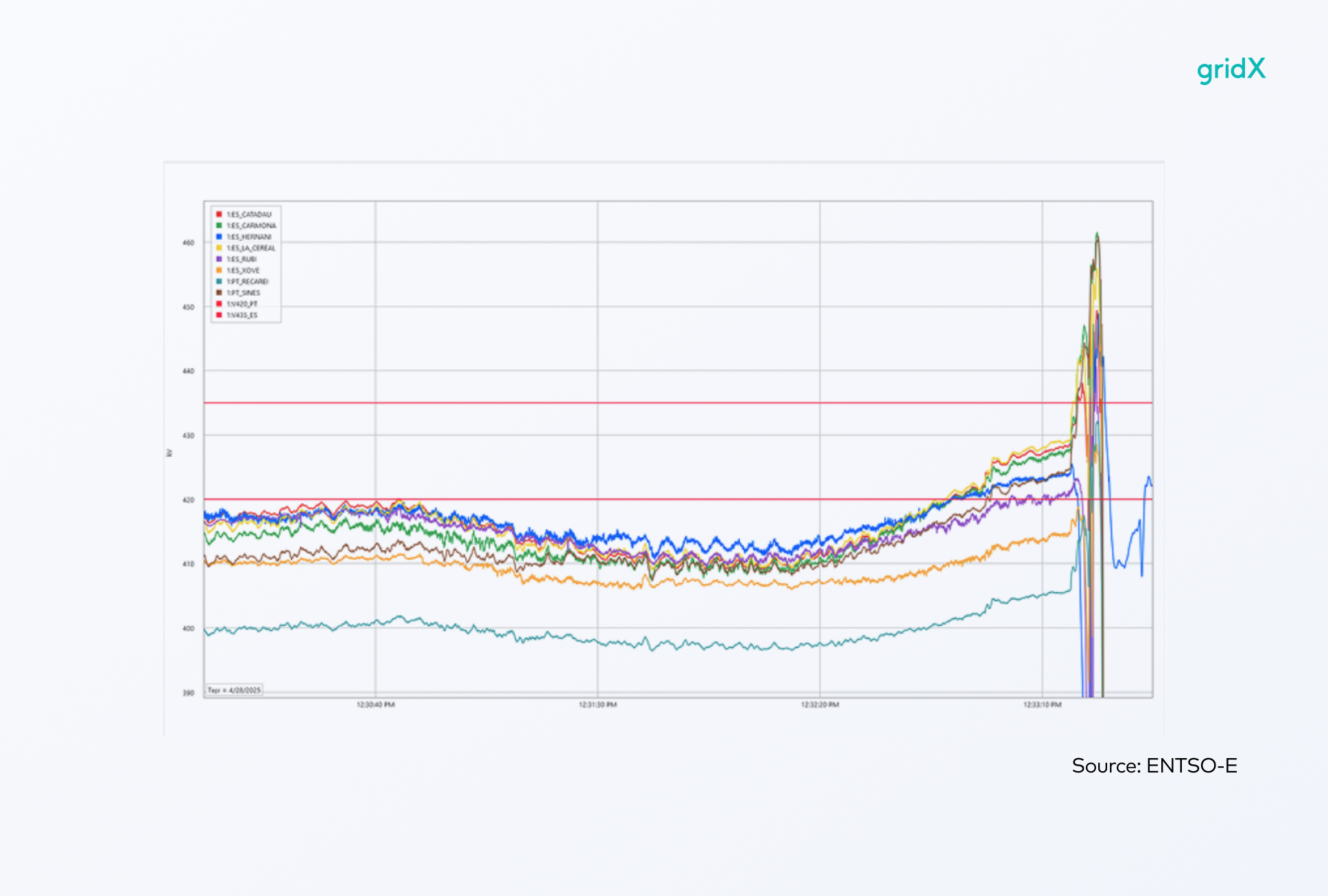
The ENTSO-E expert panel has since confirmed that it was a multifactorial failure: poor coordination at the interconnection, delayed grid stabilization responses and stressed infrastructure all contributed.
Cannes Film Festival sabotage
Although regions of France were minorly impacted by the Iberian Peninsula blackout, the country faced its own grid challenges weeks later on May 24 during the famed Cannes Film Festival. As celebrities and media personnel graced the red carpet, approximately 160,000 homes in the Côte d’Azur region lost power, including key facilities supporting the event. While backup generators helped restore basic functionality, the disruption caused significant delays and security concerns at a globally broadcasted occasion. Authorities suspect targeted sabotage against a regional substation and transmission line, prompting an urgent response from both law enforcement and grid operators.
The symbolic impact of the outage – interrupting one of Europe’s most high-profile cultural events – only reinforced the message that no system, no matter how localized or well-funded, is immune to the challenges of an interconnected grid.
The systemic fragility behind the flickering lights
What these events demonstrate is that even the most technologically advanced and interconnected electricity networks are not immune to collapse. Governance gaps, limited real-time visibility, increasing demand volatility and the growing complexity of supply from distributed energy resources (DERs) are testing system limits. As ENTSO-E's findings highlight, the path to greater reliability must be systemic and proactive.
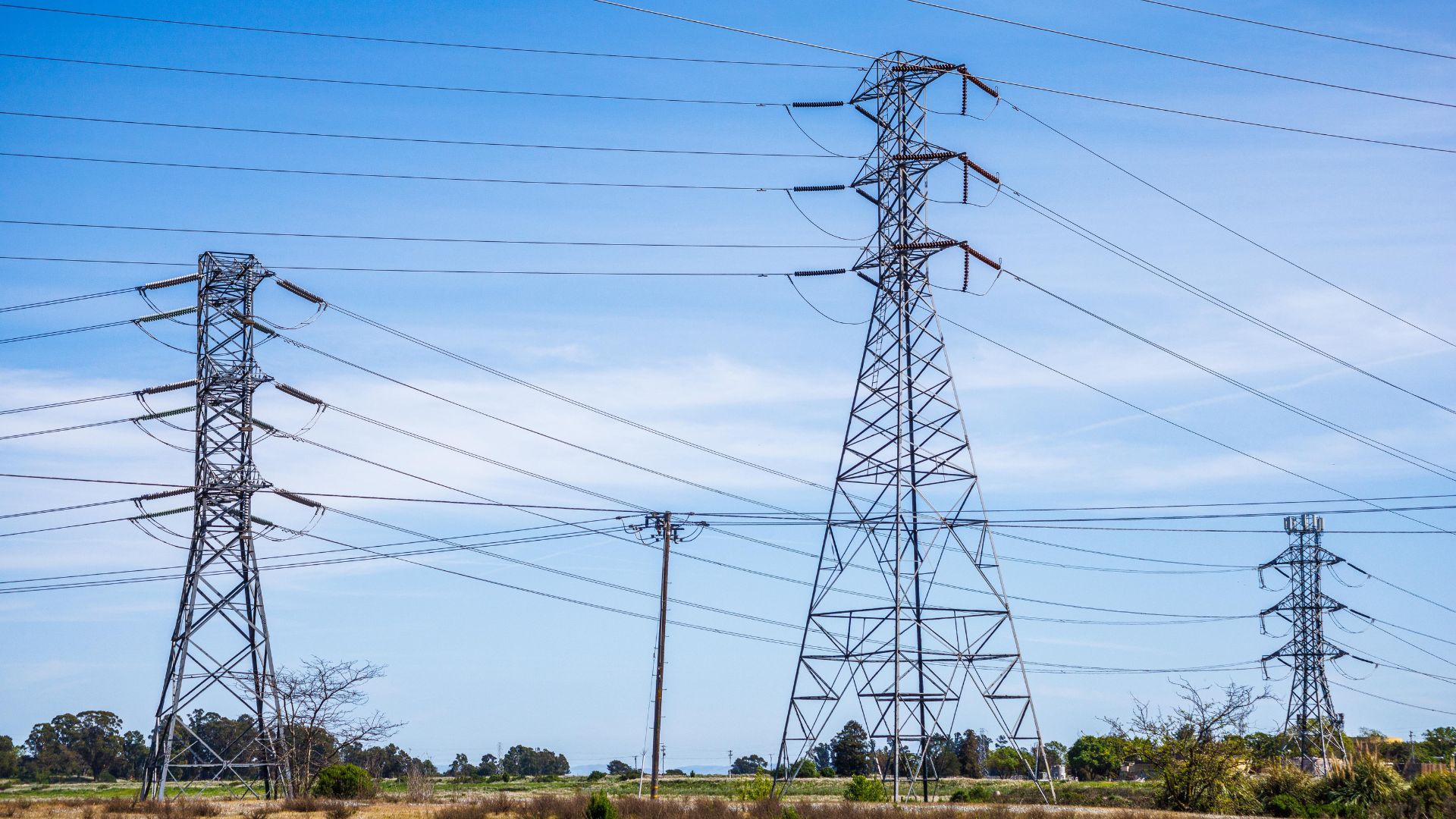
Highly interconnected grids, while efficient and capable of sharing resources, also introduce a level of shared risk. A fault in one country can ripple across borders in seconds – as seen in the Spain and Portugal grid collapse. The same interconnectivity that allows Europe to balance supply and demand can also propagate disruptions across thousands of kilometers. Without secure, resilient systems, any break in the chain can quickly escalate into a continental-scale event.
At gridX, we believe this level of interdependence makes digital security and local autonomy more critical than ever. That’s why our technology stack is built with robustness and cyber-resilience at its core.
How HEMS can help households weather future blackouts
A home energy management system (HEMS) won’t stop a blackout, but it can change the experience of living through one. Here’s how:
Smart load prioritization
Automatically powers down non-essential devices while maintaining critical functions like refrigeration, internet routers and medical equipment.
Battery + PV coordination
When paired with solar panels and batteries, a HEMS optimizes energy use during outages, extending autonomy and preserving comfort. In the case of a blackout, such as what happened in Spain and Portugal, it’s also important to not only have these assets, but have the right ones. For example, homeowners need a battery with “islanding” capabilities, that allows the home’s energy to continue operating regardless of what’s happening on the grid. Likewise, the PV needs a grid-forming inverter, which can operate independently of the grid when needed and form its own microgrid.
Grid connection management
gridX systems help enable safe and seamless reconnection when power is restored, avoiding instability or damage.
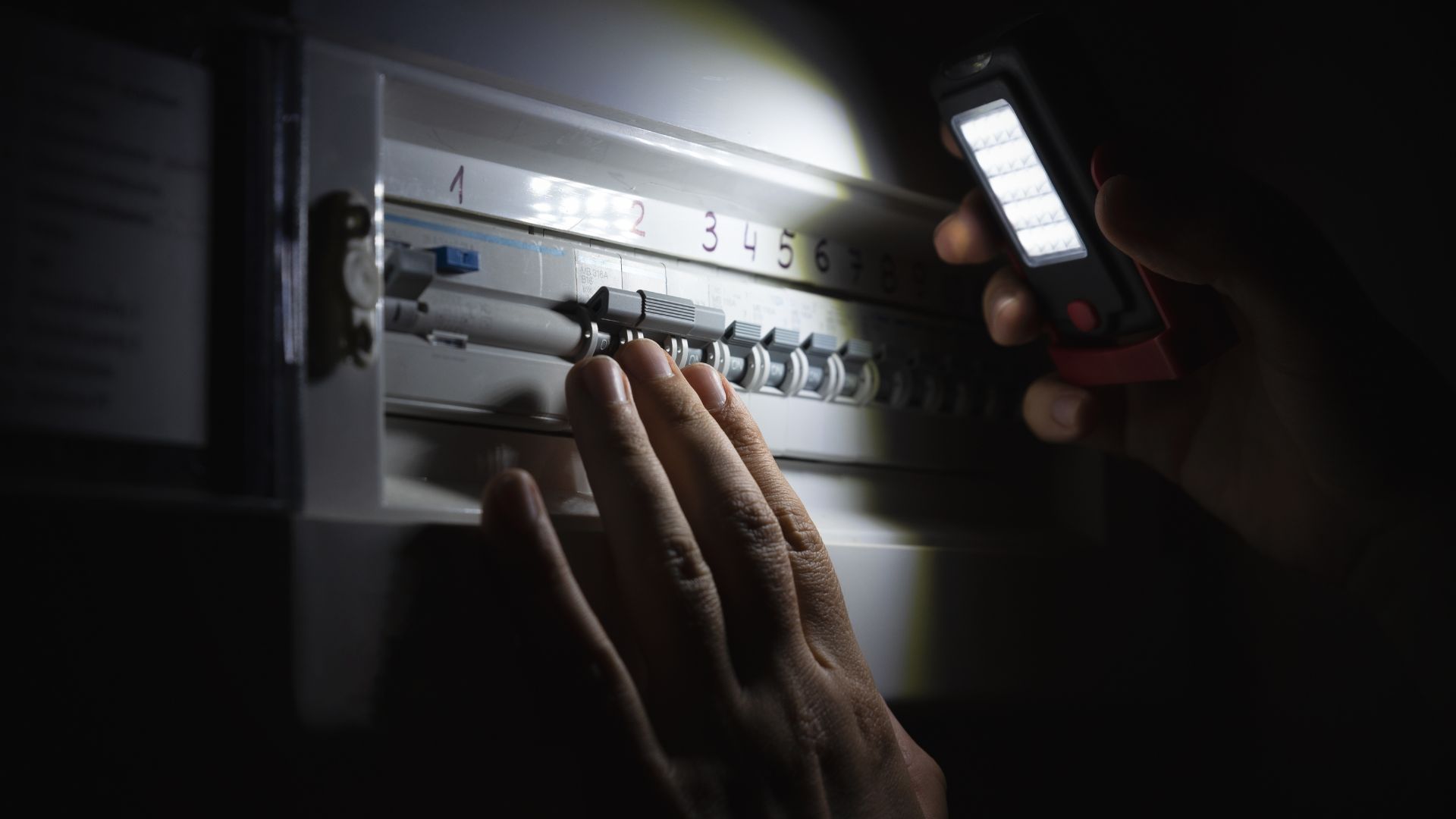
Data and diagnostics
Even in blackout conditions, HEMS can collect and relay data, providing utilities, OEMs and installers with insights to improve system support and recovery.
Local gateway plus cloud connection
gridX uses a hybrid approach – a local gateway ensures key energy functions continue even when cloud services or internet access are interrupted, while cloud integration provides advanced analytics, remote configuration and updates. This architecture enhances both reliability and responsiveness, especially in blackout scenarios.
Since the Iberian blackout, we've seen a significant surge in battery sales across Spain, highlighting how consumers are prioritizing energy autonomy like never before." - Andrea Albergoni, Senior Account Executive, gridX
What the 2025 Iberian blackout teaches us about energy management
According to gridX Senior Account Executive and Spanish market expert Andrea Albergoni, the need for smart, home energy solutions is more crucial than ever: "Since the Iberian blackout, we've seen a significant surge in battery sales across Spain, highlighting how consumers are prioritizing energy autonomy like never before. At the same time, utilities and stakeholders I engage with are increasingly focused on digital solutions that not only enhance the end-user experience but also contribute meaningful flexibility and stability back to the grid. This shift underscores a growing recognition that home energy management systems must serve a dual role: empowering consumers while supporting the broader energy ecosystem in a time of rising complexity and uncertainty."
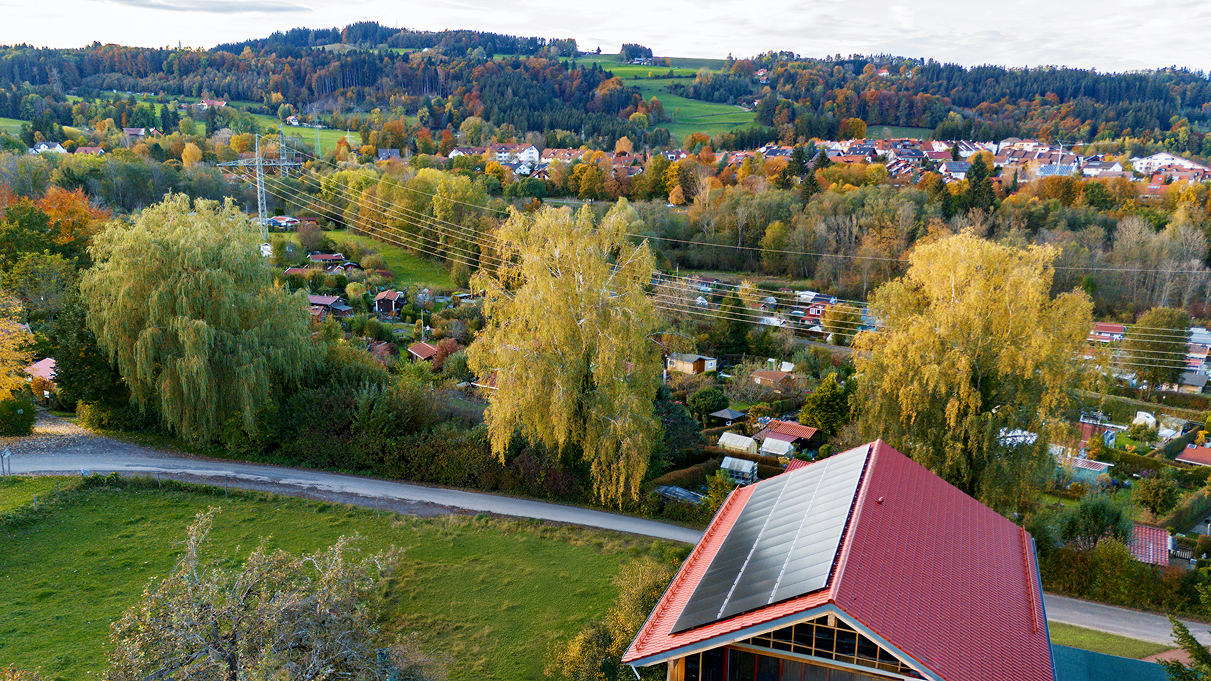
HEMS is the new standard for resilience
These blackouts underscore the need for more than just robust transmission infrastructure. We need intelligent, distributed energy resilience – starting at the household level. For energy providers, OEMs and installers, this isn’t a nice-to-have. It’s a strategic differentiator.
As gridX’s Energy Market Expert, Irene Guerra Gil, says: “At gridX, we’re doubling down on our mission to make homes smarter, more autonomous, and better prepared for whatever challenges the grid throws their way. Because in a world where outages are becoming less rare and more complex, resilience starts at home.”




